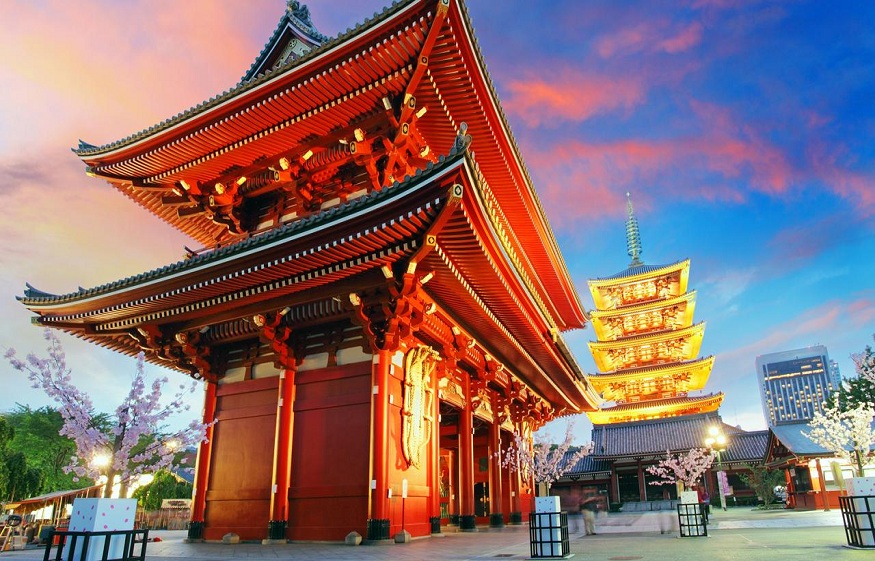
Tokyo Travel Tips You Should Know
Tokyo offers an eclectic blend of the old and the new; bustling shopping malls and skyscrapers coexist alongside ancient temples and shrines for a truly timeless experience.
Tokyo offers many things to see and do, but here are a few suggestions that should help make planning easier. Many Cathay Pacific flights are available now, including flights from Melbourne.
1. Get a visa
Once you possess the appropriate visa for Tokyo, traveling can be straightforward. While many countries no longer require a visa to enter Japan, you should still go through all necessary procedures before departing home to ensure you will have permission to reside (visa) and are eligible to work (status of residence).
Consult with the Japanese Embassy or Consulate of your location before visiting to determine what documents and items must be brought with you, as well as ensure your passport has valid visa pages.
Expats looking to reside in Japan have access to various visas. Cultural and training activities such as teaching, internships and language study generally require one. Exchange students, working holiday makers and those reliant on foreign nationals holding work visas also must obtain one prior to moving here.
For anyone hoping to set up business in Japan, obtaining a business manager visa is necessary. Requirements include providing evidence that you possess at least five million yen in capital, possess a physical office space within Japan and plan to hire employees.
As with any international move, arriving early is key for successfully navigating Japan and finding housing. You should plan to visit your Regional Immigration Bureau within three months after arrival in order to apply for residency status – your passport, certificate of employment and any additional documentation as applicable may be needed; additionally you’ll likely need to pay an application fee when applying.
2. Arrive early
Arrive early when taking the train in Tokyo as most trains often reach full capacity during rush hour and other peak periods like holidays such as New Year’s.
If travelling to Tokyo during these periods, make sure that your tickets are purchased early online so as to guarantee you have a seat. On-the-day ticket purchases may cost more as seats cannot be guaranteed.
Once you arrive at your destination, take time to walk around and admire its sights. Also check out shops and restaurants in popular areas like Shibuya and Ginza; don’t forget to try some ramen or conveyor belt sushi too!
Tokyo is an engaging mix of old and new. This can be seen through its mix of historical temples among futuristic structures as well as nightly views from Tokyo Skytree – make sure you visit early for optimal views!
Be sure to visit one of Tokyo’s many outdoor ice skating rinks this winter or, for something a bit more daring, hop aboard one of nine islands in Tokyo Bay with incredible natural landscapes and activities!
Sports fans will also love watching professional baseball games at either Tokyo Dome or Jingu Stadium, giving you the chance to soak in Japanese culture while appreciating America’s favorite pastime.
3. Take a train
Trains in Tokyo offer an efficient means of getting around. Its extensive subway network covers every inch of the city with well-labeled maps and multilingual signs making navigation effortless. Tokyo Metro and Toei Transportation both provide discounts and passes as well as rechargeable IC cards (Pasmo or Suica cards are best) which allow passengers to enter, exit and change lines like locals without purchasing individual paper tickets – perfect for saving money while exploring Tokyo!
The Yamanote Line is an integral component of Tokyo’s public transport system, running in a loop and linking many major tourist spots. Trips on this line are included as part of Japan Rail Pass membership – making this pass even more appealing if sightseeing in the city is top priority!
Keep in mind that while Japan Rail Passes can be an excellent option for planning out-of-city journeys, you still must pay for rides on other subway lines and JR buses if possible. To prevent overpaying, always buy tickets early with either discount coupons or day passes (or rechargeable IC cards) available to avoid overspending.
Klook offers affordable JR Passes that make travel around Japan both convenient and economical, covering everything from big cities like Tokyo to unspoiled nature, tea cropping, and local towns. Purchase them six months in advance for optimal planning purposes – but be warned; even experienced travellers may still find it daunting taking to Japan’s trains after a long flight!
4. Stay on the left side
Japan stands out as an unconventional nation compared to many Western countries, its culture being highly distinctive and the Japanese taking great pride in it. Though Japanese can be difficult to comprehend at times, respecting their customs as much as possible should always be observed – this includes following proper walking etiquette and remaining quiet when in public spaces.
Walking politely in Tokyo requires walking on the left side of sidewalks, standing on the right side of escalators, and permitting others to pass by on your left. Talking on phones while in public places is also considered rude behavior.
Many Japanese consider it rude to speak loudly on the phone in public, particularly if talking with people outside of one’s immediate family. Therefore, it is best to turn your phone off or keep its volume low while out and about and carry a small trash bag so as to store any potential rubbish until a bin can be found for disposal.
As another tip for walking in Tokyo, plan your route ahead of time so that you stay on the left side of the street to avoid getting lost and to see it from a unique perspective. Additionally, it would be useful to have both English and Japanese maps handy so if you become lost they will understand you and can provide assistance in finding your way through their city.
5. Don’t tip
After honing your casual Japanese skills and studying expectations regarding foreigners, you might think you are ready for Japan. There is one last piece of etiquette you must consider prior to traveling there.
Tipping is a cultural tradition in America and other countries; however, in Japan it’s not expected or appreciated in the same manner as elsewhere. Therefore, most visitors would do well to refrain from tipping when visiting Tokyo as tipping is neither expected nor appreciated in equal measure as elsewhere.
At times, it can even be considered impolite to simply whip out cash from your wallet and give it to someone. Instead, place the money in a decorative envelope with bow, so as to be seen more as an act of generosity than simply pulling out some bills from your wallet and handing them. This shows more respect.
Temples and shrines as well as historic buildings often require visitors to remove their shoes when visiting. As you pack for your trip, keep this in mind; slippers are available at many convenience stores or shops for purchase.
As a tourist visiting Tokyo, you will experience its rich culture first-hand. However, like with any travel destination there are certain activities and situations best avoided in order to ensure a more pleasurable and less stressful journey. With these Tokyo travel tips in hand, your vacation can go smoothly without worry over potential pitfalls along the way.





